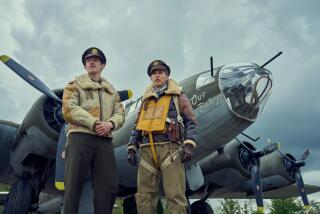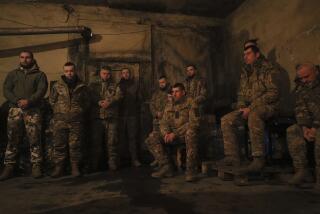Can We Fight?
The armed forces of the United States are rich in both firepower and mobility but poor in the essential fuel of war: the willingness to sustain casualties. Thus their real military potential in all imaginable situations is a mere fraction of their apparent strength. The Kosovo war proves this beyond a doubt: No attempt was made to protect the ethnic Albanians in Kosovo on whose behalf the war is ostensibly being fought because aircraft would have to fly low and slow to shoot up the Serb army and police units that were attacking their villages. Some planes might be shot down, some pilots might be killed. Along with the rest of NATO, the U.S. Air Force therefore prefers to bomb from 15,000 feet or above, safely beyond the reach of most Yugoslav antiaircraft weapons. The U.S. Army, whose Apache helicopters were ordered from Germany to Albania on the fifth day of the war, cannot seek refuge at those altitudes and have instead been protected by being kept on the ground. They have yet to fly their first mission in a blatant display of bureaucratic foot-dragging. This kind of institutional cowardice is bound to demoralize our troops in the long-run, while to plead logistical difficulties after demanding, obtaining and spending vast sums for âreadinessâ is unpersuasive.
The refusal to accept casualties, which has severely inhibited the air campaign in the Kosovo war (only fixed targets and warships can be attacked from 15,000 feet), helps to explain the current debate over deploying ground forces whose exposure to casualties is far greater. That was not much of a problem in the 1991 Gulf War. Worn down by three weeks of bombing, the Iraqis were smashed by tank and artillery fire at long range before they could even try to fire back. The wide-open desert terrain was ideal for U.S. forces: It left the Iraqis fully exposed to every form of firepower--even fragile helicopters could overfly Iraqi forces by laying down suppressive fires all around.
Less than three years later, on Oct. 3, 1993, U.S. forces were fighting in the streets, alleys and courtyards of Mogadishu, where one manâs rifle is as good as another and old Soviet RPG rocket-propelled grenades are as good as the best artillery. The resulting debacle has had an enduring effect, most recently manifest in the debates over the use of ground forces in Kosovo. What had started as a multinational U.N. famine-relief effort in Somaliaâs endless civil war (itself misguided because the food was feeding the warriors first of all) had become an entirely hopeless ânation-buildingâ exercise. That in turn became an American mini-war against the Habr Gidr clan of Mohammed Farrah Aidid, briefly advertised by the White House as Somaliaâs No. 1 monster, who was in fact a perfectly ordinary African warlord naturally opposed to peace and nation-building because it would stop him from continuing his trade. A mixed force of U.S. Army Rangers and Delta commandos with a few Navy SEALs thrown in had gone in by helicopter to snatch some Habr Gidr leaders meeting in the heart of ruined Mogadishu. When a high-tech special-operations helicopter was shot down, an even more high-tech rescue helicopter arrived to save the crew, but it too was shot down (owing to Aididâs good management, the Habr Gidr warriors had plenty of RPGs even when their families were starving). That left some 150 highly trained Delta âoperatorsâ and less experienced Rangers stranded in the urban landscape amid thousands of Somali gunmen. They had to fight them off all night long until the infantry of the 10th Mountain Division rode in to rescue them in borrowed Malaysian armored carriers supported by a few Pakistani tanks. The Somalis ranged in skill from the âBeirut standardâ (full automatic fire, eyes shut) to the almost competent, but it was their sheer number and the complicated urban terrain that turned a commando raid into a desperate fight for survival in which 18 Americans were killed. The entire television-watching world saw frenzied Somalis celebrating victory on the bodies of dead Americans.
Les Aspin, the secretary of defense, was unfairly blamed for the lack of U.S. armor in Somalia (which the commander on the scene had not requested). Undermined by leaks from the Clinton White House, which accepted no responsibility for having turned a humanitarian intervention into a war against Aididâs clan, Aspin resigned, soon to die of a heart attack. The Joint Chiefs escaped without consequence, after the commander of the 450-man Special Operations contingent of Deltas, Rangers, SEALs and helicopter crewmen honorably took the blame for what went wrong.
Mark Bowdenâs hyper-detailed account, based on exhaustive interviews with a fair sample of the survivors as well as with a few Somalis at the scene, succeeds in reconstructing many episodes of the fighting. It is exciting reading and also quite valuable historically because his technique of presenting the same episodes from multiple perspectives is very revealing. The reader will discover some of the reasons why the American armed forces, for all their skills in large-scale operations, persistently fail in the craft business of the commando raid.
Item: In deference to the bureaucratic priority of sharing out the action, very different military units are mixed together. That looks good on paper when the âtailor-madeâ mixed task force is being planned, but under the terrible pressure of immediate life-threatening combat, the seams inevitably come apart. In the most critical phase of the Mogadishu fight, the Ranger company commander refused to go on communicating with the Delta commander after multiple misunderstandings caused by radically different conceptions of how to fight in a dense, urban terrain. (The Deltas are at home there, while the Rangers still train for jungles, swamps and open terrain. As for the SEALs, basically trained for seaborne infiltration and totally out of place in urban combat, they were used only to give the Navy a share of the action.)
Item: The commando business is all about small outnumbered forces succeeding on their own without air power, artillery or any sort of logistic support. That is a lesson thoroughly absorbed by Delta, whose commanders assume that initial plans will always go wrong, and which therefore goes about with all it needs at all times. But the Rangers set out for the raid well after 3 p.m. without their night-vision gear because the plan called for a one-hour operation. As darkness descended on Mogadishu, they found themselves without the one piece of equipment that would have given them a real advantage over the Somalis.
Readers will also discover why the U.S. armed forces are no longer willing to risk any sort of combat under the U.N. flag. In Mogadishu they found themselves alongside some U.N. contingents that were not willing to fight for any reason, not even to defend themselves; when attacked by a flyblown Somali gang, they simply retreated into the fortified strongholds they had prudently built. Other contingents, notably the Italians, more or less openly sided with the Somalis, so much so that their offer of help during the Mogadishu fight was rejected by mistrustful American commanders. Others did help but only on their own terms. Thus the Malaysians provided the armored cars that allowed the troops of the U.S. Armyâs 10th Mountain to ride to the rescue through pervasive small-arms fire but insisted on using their own drivers, who refused to drive over roadblocks. Much time was lost in finding a roundabout route. The Pakistanis provided tanks that would have assured a fast rescue if boldly used, but they would not operate tanks deep in the city (where they were needed) and the armored cars and soft vehicles had to advance without their support.
Readers will be satisfied by Bowdenâs well-written book even if they are not interested in the operational details or the politics and strategy of the Somalia intervention. Because the personalities--from young soldiers to veteran Ambassador Robert Oakley--emerge as recognizable human beings, the action is gripping from beginning to end.
More to Read
Sign up for Essential California
The most important California stories and recommendations in your inbox every morning.
You may occasionally receive promotional content from the Los Angeles Times.










